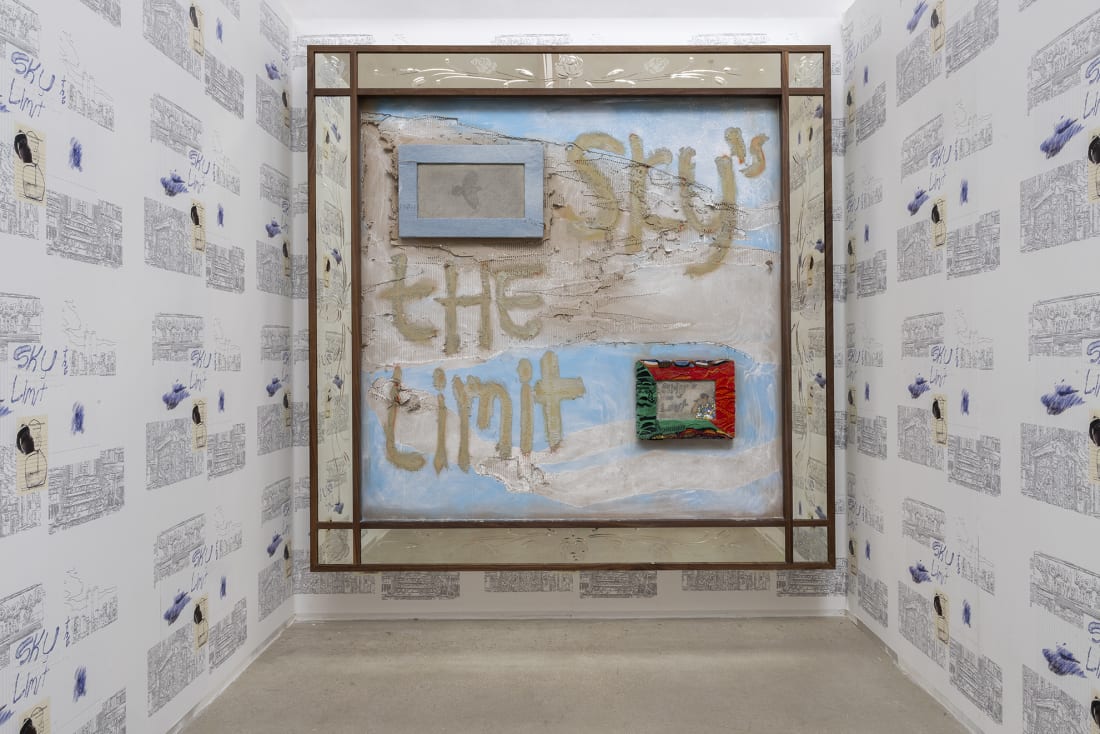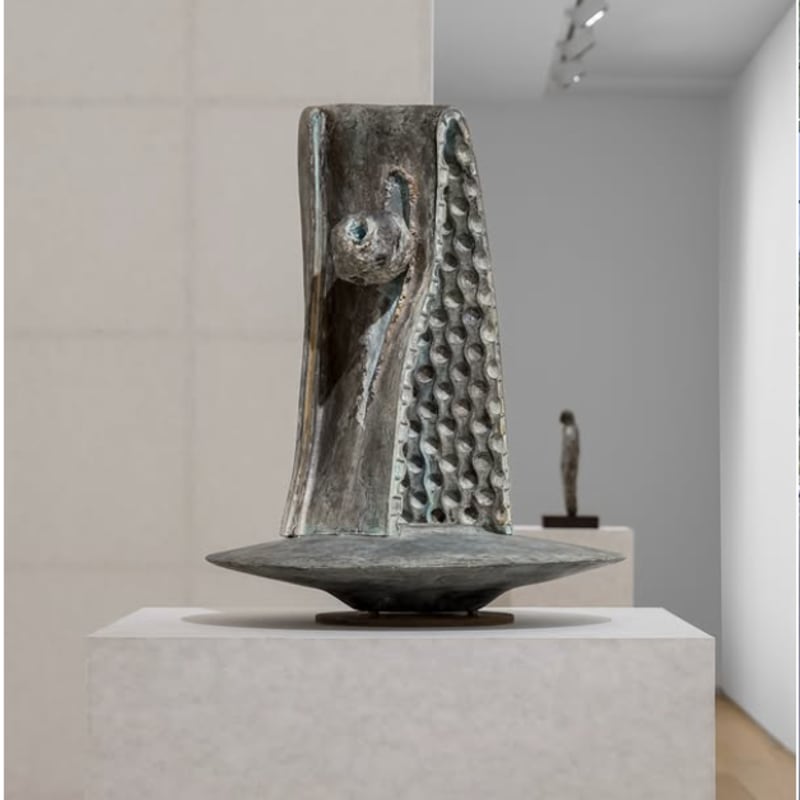Alvaro Barrington looks back Amah-Rose Abrams reviews 'They Got Time: YOU BELONG TO THE CITY'
By Amah-Rose Abrams
The film Breakfast at Tiffany’s opens with Holly Golightly in evening wear as dawn breaks over New York, looking at the jewels in the window while eating a croissant. Where has she been? Why is she alone on Fifth Avenue at dawn dressed for a party? Alvaro Barrington’s ambitious exhibition at Thaddaeus Ropac’s Pantin gallery ‘They Got Time: YOU BELONG TO THE CITY’ opens with this scene, although rather than a pearl necklace we see Holly Golightly looking wistfully at a gregarious Dennis Rodman with his tongue out, tempting her and taunting her. Holly is on the other side of the glass, looking in at something she can’t have. This exhibition deals with the reality of growing up in a city of dreams.
Alvaro Barrington grew up in New York as the son of Haitian and Grenadian migrant workers, and his memories of his childhood are marked by both the work he saw his family put into raising him and the possibilities that surrounded him.
The exhibition explores Barrington’s feelings as a child and young man dealing with the thrill and aspiration of being an outsider, and is divided into three chapters CHAINGING ROOM, THE BLOCK and THE GARDEN. He takes us on a journey of yearning to being a part of the ‘art world’, the establishment and the highs and lows of his success becoming a reality. Here he takes elements of his paintings; storefronts, concrete, 90s pop culture, flowers, contemporary iconography and mixed media, and expands them into an installation which fills the three huge rooms of Ropac’s vast Pantin space.
“Seeing a painting on the wall, I have become more and more aware that I it feels less and less interesting, and we're at a place now where artwork, especially painting, can just become PDF art. We really need, as painters, to give people reasons to go to an exhibition and feel, physically and emotionally, the reason that they're there,” Barrington explained over the phone from New York. ”It can't be duplicated on an iPhone, or on a screen, they really need be able to understand that an exhibition was thought up with intention.”
We then pass through a looped chain curtain - the kind of chain you can buy by the length and wear around your neck - which swings as you enter and exit. There we are greeted by metal shutters, two graffitied with a single line spray painted down the centre, another a standard one and a third, polished and shining, almost saying ‘pick me’. We stand looking at these closed doors and as they exclude, they also entice.
“It was about that time in New York, I was growing up with hip hop and hip hop was my discovery of myself, it was the news for me. I mean, I have Ghostface Killah, All That I Got is You, tattooed on my arm, because the things that he talked about, in those songs, I've lived in my reality,” Barrington explains. “There was a bunch of us in a one bedroom apartment and four of us in the sofa bed, and my brother would be paying the bat, and we'll be digging cockroaches out the cereal box and all that. We also understood the sacrifices our moms and aunties were making just to even give us the bare minimum. That's why so many kids end up selling drugs, because they want to help their parents.”
As we enter THE BLOCK, we are in what seems like a covered market with wooden shutters. On one side is a series of wall works, paintings in Tiffany stained glass ranging from scenes from Breakfast at Tiffany’s and a series of paintings, flanked by mini shutters and carved roses almost iconographic in appearance. We see Tupac and Andy Warhol, Mary J. Blige and icons of 90s America. Facing these we have a series of small shops or indoor stalls. The first has a canopy roof made from perforated Alaïa leather with a stunning rose gold diamond shaped mirror, while next door we bend double and pass through thick, heavy chains into a room, faced by a neon, cardboard and concrete work which evokes Robert Rauschenberg. In the next room we are told, “The Sky’s the Limit.”
A play on the art historical gardens of Hironimus Bosch and the iconic stadium Madison Square Garden in New York in this section is dedicated to Barrington’s basketball paintings. Five paintings in mesh metal arbours overgrowing with ivy, each filled with an icon like altars to a chosen deity; kingpins, basketball heroes and roses.
“I thought that would be like an interesting thing to kind of play with, what are some of the material materialities of my lived experience in New York that I could bring and could be the one leading the decision making in the art,” Barrington revealed. ”So icons, religion, icons and people who are becoming iconic felt like a natural way to address and to with deal with some of these things.”
Barrington combines neons, tarmac, cardboard, chainmail, leather, stained glass, MDF, milk crates and mesh fencing in this show, to name but a few elements. Each one has a resonance or a code, the stained glass milk crates that frame the paintings for example glitter with the promise of ambitions to play basketball, and the inventiveness you have to employ when you don’t have amenities at your disposal.
“The milk crates are just like how are how you practice to get into the NBA or practice and become a good basketball player, if your playgrounds weren't inaccessible, maybe too far away or maybe there were drug dealers there. You got a milk crate, cut a hole underneath and you practiced in your backyard, if you had one.”
The anticipation palpable in They Got Time: YOU BELONG TO THE CITY could possibly echo Barrington’s own excitement as he prepares for a major installation at Tate Britain opening in Spring 2024. At 40, Barrington’s success in tackling subjects that reach further than the confines of the art world far surpasses his years.
Alvaro Barrington They Got Time: YOU BELONG TO THE CITY runs from 18 October 2023—27 January 2024 at Paris Pantin























































































































































































